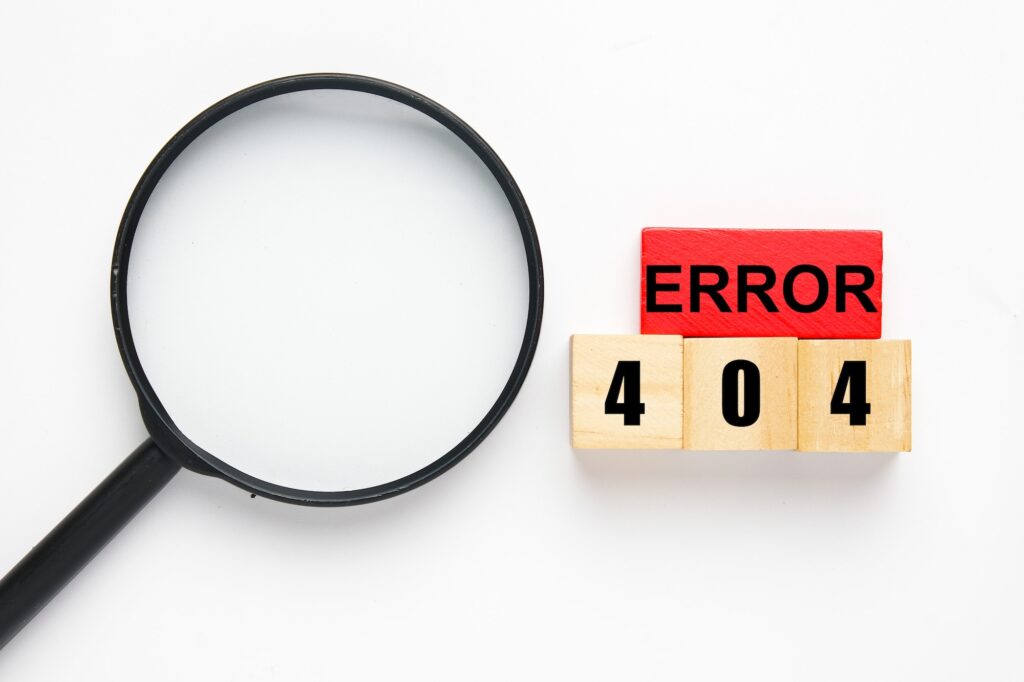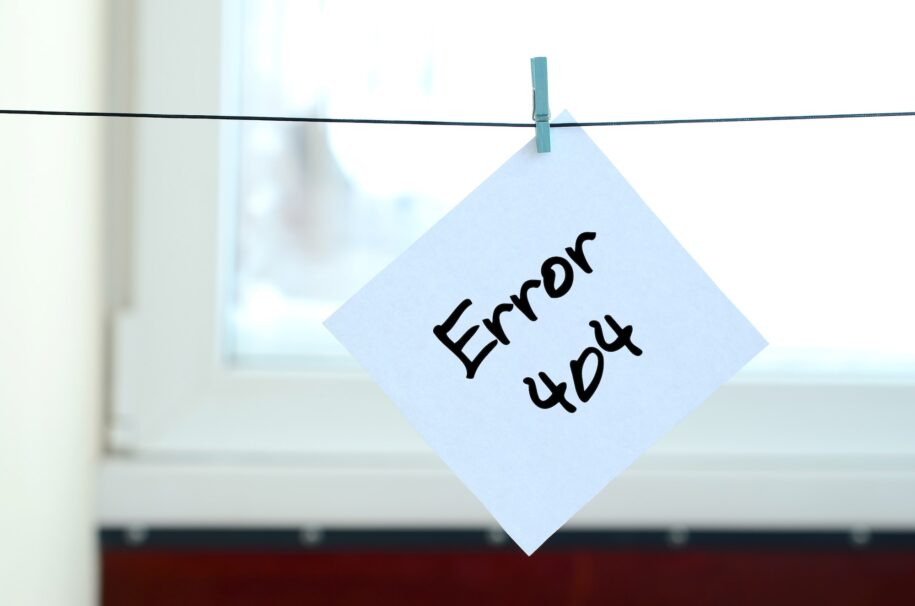Website auditing
As websites continue to grow in importance and complexity, it becomes increasingly important for broken hyperlinks to be addressed, to ensure your website functions at peak performance. One key aspect of website maintenance is monitoring for broken links, which can adversely affect user experience and search engine rankings.
Broken links occur when a webpage contains a hyperlink that leads to a page that no longer exists, resulting in a 404 error message or other error. These broken links can frustrate users and deter them from returning to your site, damaging your reputation and revenue. Moreover, search engines like Google penalise sites with broken links, leading to lower rankings and reduced visibility.
Fortunately, auditing your website for broken links is a straightforward process that can be accomplished using a variety of tools and techniques. Regularly monitoring your website for broken links can help you maintain the integrity of your website and ensure a seamless user experience for visitors.
In this article, we will explore the importance of auditing your website for broken links in 2023 and provide actionable tips on how to do so effectively. By the end of this article, you’ll have a clear understanding of why auditing your website for broken links is crucial for your website’s success, and you’ll be equipped with the tools and knowledge you need to get started.
Importance of auditing your website for broken hyperlinks
Auditing your website for broken links is of utmost importance because broken links can have a negative impact on both user experience and search engine rankings.
Firstly, broken links can frustrate users who are attempting to navigate your website. When a user clicks on a hyperlink that leads to a page that no longer exists, they are likely to encounter a 404 error message, resulting in a poor user experience. If this happens repeatedly, users may become frustrated and choose to leave your website altogether, leading to a high bounce rate and reduced engagement. This can ultimately damage your brand reputation and affect your bottom line.
Secondly, search engines like Google view broken links as a negative factor when determining the quality and relevance of a website. Search engines expect websites to provide a seamless user experience, and broken links can signal to search engines that your website is not up-to-date or well-maintained. As a result, your website may be penalised in search engine rankings, leading to reduced visibility and traffic.
By regularly auditing your website for broken links, you can identify and fix these issues before they cause significant harm to your website’s performance. This can help you maintain a high level of user satisfaction, increase engagement and ultimately, improve your search engine rankings.
Here’s how you can effectively audit your website for broken hyperlinks:
Auditing your website for broken links is crucial for ensuring a seamless user experience and maintaining good search engine rankings.
Here are some effective strategies to help you audit your website for broken links:
- Use a web crawler: A web crawler is a tool that can automatically scan your website to identify broken links. There are several web crawlers available, including free and paid options. These tools can save you time and effort by quickly identifying all broken links on your website.
- Manually check links: While web crawlers can be helpful, they may not catch all broken links. It’s a good practice to manually check your website for broken links as well. You can do this by clicking on each link on your website and checking if it leads to a functional page.
- Use a broken link checker plugin: Many content management systems (CMS) have plugins available that can scan your website for broken links. For example, WordPress has several plugins available, including Broken Link Checker and Link Checker. These plugins can automatically scan your website and identify any broken links.
- Check external links: In addition to checking internal links on your website, it’s essential to also check external links. External links are links that lead to other websites. If any of these links are broken, it can affect your website’s credibility and user experience.
- Set up Google Search Console: Google Search Console is a free tool that can help you identify and fix broken links on your website. It can also provide insights into how your website is performing in search engine rankings. By setting up Google Search Console, you can receive alerts for any broken links on your website and take action to fix them.
- Use redirects: If you identify any broken links on your website, you can use redirects to redirect users to a functional page. This can help maintain user experience and prevent 404 errors.
By using a combination of these strategies, you can effectively audit your website for broken links and ensure a seamless user experience for your visitors.

Tools to screen for and troubleshoot these hyperlinks
There are several tools available to help you audit your website for broken links. Here are some of the most popular options:
- Ahrefs: Ahrefs is a popular SEO tool that includes a broken link checker feature. With Ahrefs, you can scan your website for broken links and receive a report of all identified issues. This tool is comprehensive and can also provide insights into other aspects of your website’s performance, such as backlinks and keyword rankings. Check out Ahrefs here: https://ahrefs.com/
- Semrush: Semrush is another popular SEO tool that includes a broken link checker feature. With SEMrush, you can scan your website for broken links and receive a report of all identified issues. This tool is easy to use and provides valuable insights into your website’s overall SEO performance. Check out Semrush here: https://www.semrush.com/
- Broken Link Check: Broken Link Check is another free online tool that can scan your website for broken links. With this tool, you can enter your website’s URL, and it will scan your website for broken links and provide you with a report of any issues found. This tool is straightforward and easy to use. Check out Broken Link Check here: https://www.brokenlinkcheck.com/
Closing thoughts
Auditing your website for broken hyperlinks is a crucial aspect of maintaining a high-quality user experience and ensuring good search engine rankings. Broken hyperlinks can lead to frustrating user experiences and can negatively impact your website’s credibility and search engine performance.
To effectively audit your website for broken hyperlinks, you can use a variety of strategies, including using web crawlers, manually checking links, using broken link checker plugins, checking external links, setting up Google Search Console, and using redirects. By using one or more of these strategies, you can identify and fix any broken hyperlinks on your website, ensuring that your visitors have a seamless experience and that your website remains competitive in search engine rankings.
It’s important to note that auditing your website for broken hyperlinks should be an ongoing process, as new hyperlinks can break over time. By regularly auditing your website and taking action to fix any broken hyperlinks, you can ensure that your website is always functioning at its best.
In 2023 and beyond, auditing your website for broken hyperlinks will continue to be an important aspect of maintaining a successful online presence. By following the strategies outlined in this article and making a commitment to ongoing website maintenance, you can ensure that your website is always functioning optimally and providing the best possible user experience.

Leave a Reply